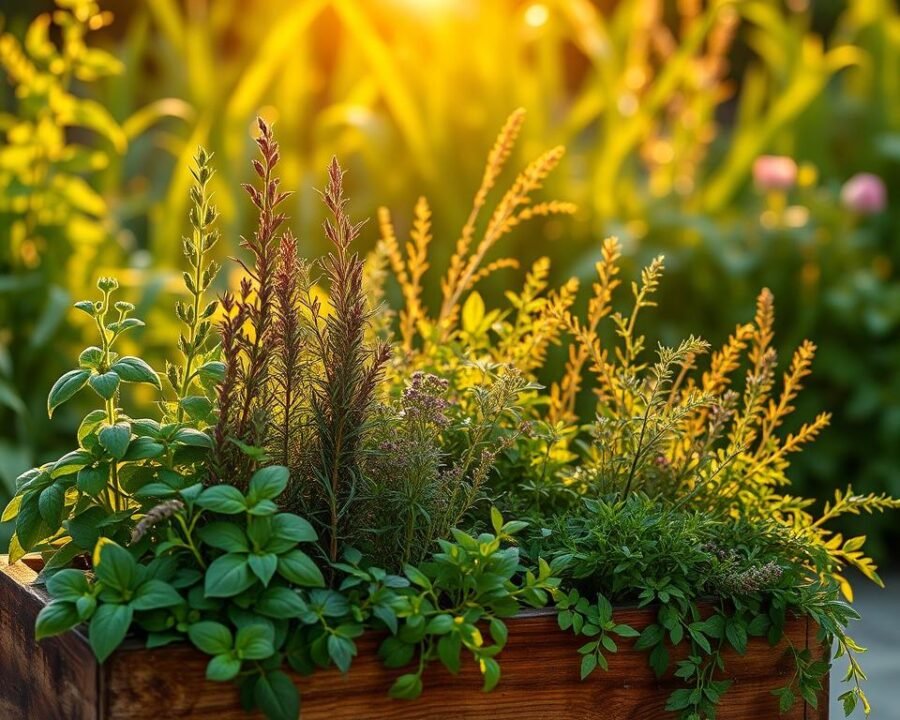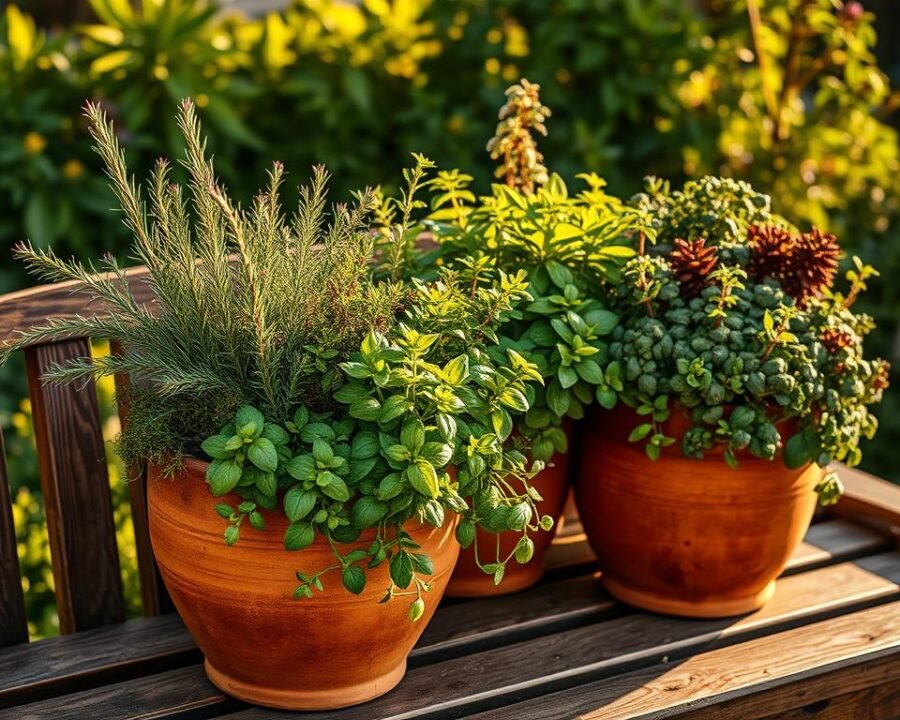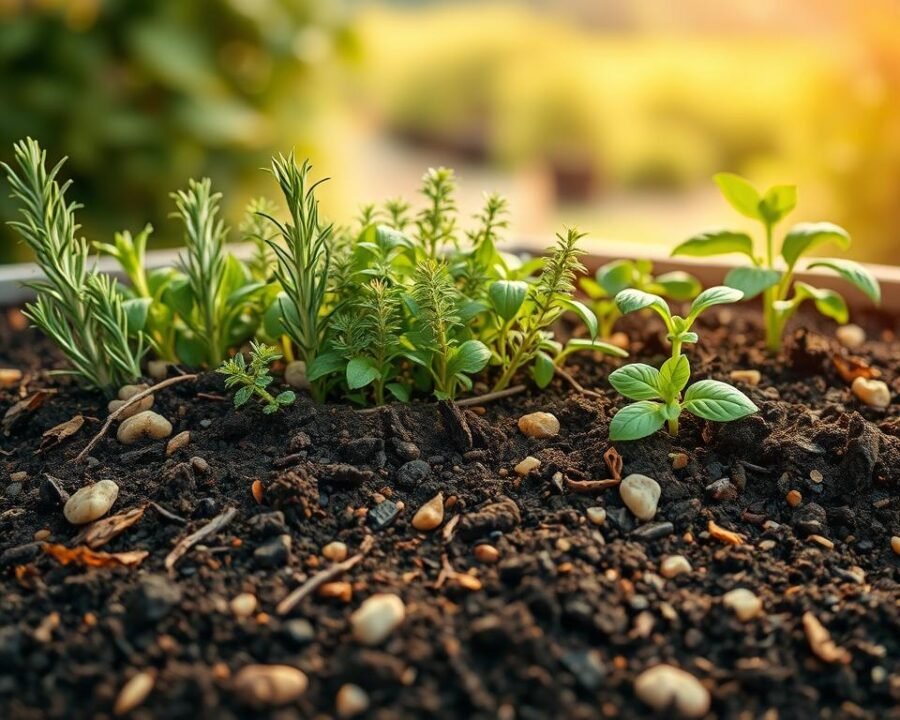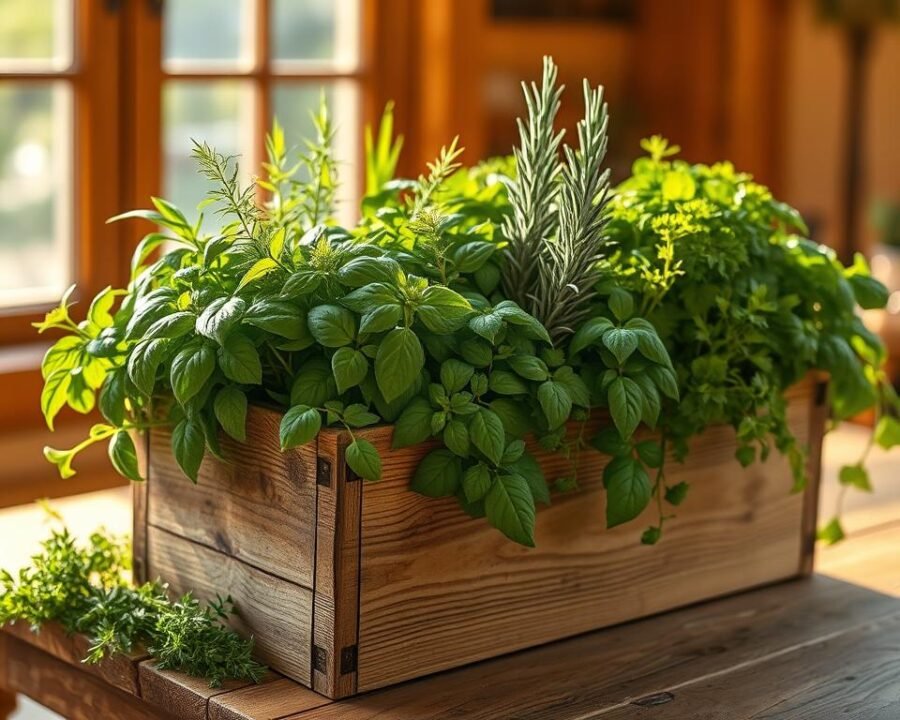Discover How to Grow Outdoor Herb Planter Everyone Is Using with Us
There’s something magical about stepping outside and snipping fresh herbs for your meals. Whether you have a sunny balcony or a cozy patio, cultivating your own greens is easier than you think. No need for a sprawling yard—just a little space and the right know-how.
We’ve perfected a simple system that turns beginners into confident gardeners. Imagine having basil, rosemary, and mint at your fingertips year-round. Not only does it save money, but the flavor of homegrown herbs beats store-bought every time.
Our guide covers everything—from choosing the best containers to pairing herbs that thrive together. Even if you’ve never planted a seed, we’ll help you succeed. Let’s turn your space into a lush, aromatic retreat.
Key Takeaways
- Perfect for small spaces like balconies or patios
- Enjoy fresh, flavorful herbs all year
- Save money compared to store-bought options
- Simple steps for beginners and experts alike
- Learn ideal container choices and herb pairings
Why Growing Your Own Outdoor Herb Planter Is a Game-Changer
Nothing beats the aroma of freshly picked greens right outside your door. A herb garden isn’t just a space-saver—it’s a flavor powerhouse that pays for itself. Let’s explore why this simple shift delivers big rewards.
Fresh Herbs at Your Fingertips
Store-bought fresh herbs wilt fast, but homegrown ones stay vibrant. Need basil for pasta? Just step outside. This 24/7 access sparks creativity in the kitchen—no more last-minute grocery runs.
One home cook transformed bland takeout by adding homegrown basil. “It tasted like a restaurant dish,” she shared. With a herb garden, every meal feels special.
Cost-Effective and Sustainable
Compare costs:
- $3 buys a clamshell of herbs—or a plant that yields for months.
- Harvest only what you need, slashing food waste.
- No plastic packaging or cross-country food miles.
For families, this adds up fast. Plus, it’s a win for the planet. Your time investment? Minutes per week for endless flavor.
How to Grow Outdoor Herb Planter Everyone Is Using: Getting Started
The secret to thriving greens lies in two critical early decisions. Picking the right spot and choosing between seeds or starter plants can make or break your garden. Let’s simplify these steps for foolproof results.
Choosing the Right Location
Sunlight is non-negotiable for most herbs grow well. Mediterranean varieties like rosemary and thyme crave 6+ hours daily. Shade-tolerant options (mint, parsley) thrive with just 4 hours.
| Herb Type | Sunlight Needs | Examples |
|---|---|---|
| Mediterranean | 6+ hours | Rosemary, Thyme, Oregano |
| Shade-Tolerant | 4 hours | Mint, Parsley, Chives |
Urban gardeners, take note: Reflective surfaces (white walls, mirrors) can amplify light in tight spaces.
Deciding Between Seeds vs. Starter Plants
Seeds offer variety but demand patience. Start them indoors 8–10 weeks before the last spring frost. Trusted brands like Baker Creek or Southern Exposure ensure quality.
- Pros of Seeds: Cheaper, wider selection.
- Cons: Longer wait; germination risks.
Starter plants from local nurseries skip the guesswork. Inspect roots (white and firm) and leaves (no spots). Avoid big-box stores—their plants often carry pests or diseases.
Selecting the Best Herbs for Your Outdoor Planter
The perfect herb selection can transform your planter into a culinary treasure. Start with easy-to-grow varieties, then explore pairings that boost growth and flavor. Avoid common pitfalls like invasive roots or clashing tastes.

Beginner-Friendly Picks
New to gardening? These forgiving greens deliver quick wins:
- Basil: Loves warmth and regular trimming for bushier growth.
- Mint: Thrives in shade but needs a separate pot to prevent spreading.
- Parsley: A biennial that adds freshness to dishes year-round.
Perfect Plant Pairings
Group herbs with similar needs for hassle-free care:
| Group | Herbs | Key Needs |
|---|---|---|
| Mediterranean | Rosemary, thyme, oregano | Well-drained soil, less water |
| Moisture-Loving | Parsley, cilantro, chives | Consistent dampness |
Herbs to Keep Apart
Some combinations stunt growth or alter flavors:
- Dill + Carrots: Compete for nutrients.
- Basil + Rue: Rue’s oils weaken basil’s flavor.
For mint, use containers with root barriers—it’s notorious for overtaking space.
Picking the Perfect Container for Your Herb Garden
The foundation of a thriving herb collection lies in smart container selection. Material, size, and design work together to create ideal growing conditions. Let’s explore what makes certain choices stand out.

Material Matters
Terracotta breathes well but dries fast—perfect for Mediterranean herbs. Plastic retains moisture for thirsty greens like parsley. Food-grade galvanized stainless steel offers durability with a modern farmhouse look.
| Material | Best For | Care Tip |
|---|---|---|
| Terracotta | Rosemary, thyme | Soak before planting |
| Plastic | Basil, cilantro | Use light colors to reflect heat |
| Metal | Mint, chives | Add insulation in winter |
Drainage Is Non-Negotiable
Without proper drainage holes, roots drown. For decorative pots without holes:
- Layer perlite at the base
- Use a salad greenswater tray as a removable liner
- Drill holes with a ceramic bit
One gardener transformed a colander into the perfect mint home. “The holes were already there—it’s thriving!”
Think Outside the Pot
Upcycle with these clever ideas:
- Vintage toolboxes (add drainage holes)
- Galvanized buckets (line with landscape fabric)
- Wooden crates (use plastic inserts)
Depth matters too. Rosemary needs 12″ of room, while thyme flourishes in 6″. Match your container to your herbs’ needs for unstoppable growth.
Preparing the Ideal Soil Mix for Your Herbs
Healthy herbs start from the ground up—literally. The right soil blend ensures robust growth and intense flavors. Skip generic garden dirt; herbs crave a tailored mix that balances drainage, nutrients, and pH.

Soil Composition for Optimal Growth
Think of your mix as a recipe. Combine:
- 50% potting mix: Lightweight and sterile to avoid pests.
- 30% compost: Packed with nutrients for vigorous plants.
- 20% perlite: Boosts aeration and prevents soggy roots.
Test water retention by squeezing a handful. Ideal soil holds shape briefly before crumbling. Too sticky? Add more perlite. Too dry? Mix in compost.
Organic vs. Synthetic Fertilizers
Natural options like fish emulsion or worm castings feed plants slowly and improve soil health. Synthetic fertilizers offer quick fixes but can harm microbes over time.
| Herb | Preferred pH | Monthly Feed |
|---|---|---|
| Basil | 6.0–7.5 | Compost tea |
| Rosemary | 5.5–6.5 | Fish emulsion |
Avoid synthetic fertilizers with chemical residues—opt for organic solutions to keep flavors pure and plants thriving.
Planting Your Herb Container Garden Step-by-Step
Mastering the art of container planting ensures vibrant, flavorful herbs all season. We’ll guide you through spacing secrets and root-care techniques that professional growers use. These methods prevent overcrowding while maximizing your garden’s productivity.
Spacing Guidelines for Healthy Growth
Give each plant room to flourish. Basil needs 8″ between neighbors, while compact thyme thrives with 6″. For mixed planters, follow the “Thriller, Filler, Spiller” method:
- Thriller: Tall centerpiece (rosemary, dill)
- Filler: Mid-height plants (basil, oregano)
- Spiller: Trailing edges (thyme, creeping mint)
Odd-number groupings create visual harmony. Three or five plants per pot often work best.
Planting Depth and Techniques
Handle roots with care—gentle massage loosens pot-bound strands. Dig holes deep enough to cover root balls completely. Here’s a quick reference:
| Herb | Planting Depth | Special Tip |
|---|---|---|
| Basil | 1″ above roots | Pinch top leaves to encourage bushiness |
| Mint | Soil level | Use root barrier in shared containers |
After planting, water thoroughly until it drains from the bottom. This settles soil around roots. New seedlings need gradual sun exposure—start with 2 hours daily, increasing over a week.
Caring for Your Outdoor Herb Planter
Keeping your greens thriving requires simple but precise care. With the right techniques, you’ll enjoy lush flavors all season long. Let’s break down the essentials—from water wisdom to smart harvesting.
Mastering Watering Techniques
Herbs dislike soggy feet but crave consistent moisture. Use the finger test—insert up to your second knuckle. Dry soil? Time to water. For precision, moisture meters show exact levels at root depth.
- Morning watering reduces evaporation and prevents mildew.
- Evening sessions work in cooler climates but avoid wet leaves overnight.
- Adjust frequency in heat waves—containers dry faster than ground soil.
One gardener doubled her basil yield by switching to deep, infrequent watering. “The roots grew stronger searching for moisture,” she noted.
Sunlight Needs by Herb Type
Not all greens bask equally. Mediterranean varieties like rosemary demand full sunlight (6+ hours). Leafy annuals such as parsley tolerate partial shade.
| Light Level | Herbs | Tip |
|---|---|---|
| Full sun | Oregano, sage, thyme | Rotate pots for even exposure |
| Partial shade | Basil, cilantro, mint | Use reflective surfaces to boost light |
Pruning and Harvesting Secrets
Regular trimming encourages bushier growth. For basil, try the haircut method—snip the top third every two weeks. Always cut above leaf nodes to spur new branches.
- Harvest leafy herbs like parsley at the base.
- Pinch flowers off basil to prolong leaf production.
- Overwinter perennials like rosemary by moving them indoors before frost.
One chef swears by pruning thyme weekly. “It tripled my yield and intensified the flavor,” he shared. Store cuttings in water on your counter for instant use.
Troubleshooting Common Herb Garden Problems
Spotting issues early keeps your greens thriving through every season. Most problems have simple fixes—whether it’s bugs, yellow leaves, or slow growth. We’ll help you diagnose and treat them like a pro.
Natural Pest Control Solutions
Tiny invaders like aphids or spider mites hate this homemade spray:
- Mix 1 tbsp liquid castile soap with 1 quart water
- Spritz leaves every 3 days until pests disappear
- Add marigolds as companion plants—their scent repels bugs naturally
For stubborn diseases, remove affected leaves immediately. Prevent spread by watering at the base, not the foliage.
Watering Woes: Too Much or Too Little
Over-watering causes droopy yellow leaves, while dry plants turn crispy. Check soil daily during heat waves. A moisture meter takes the guesswork out—aim for damp, not soggy.
| Symptom | Likely Cause | Fix |
|---|---|---|
| Moldy soil | Over-watering | Let dry completely before next watering |
| Brittle stems | Under-watering | Soak pot for 30 minutes |
Emergency Plant Revival
To revive struggling plants:
- Trim dead growth to redirect energy
- Repot with fresh soil if roots are brown and mushy
- Protect from direct sun for 3-5 recovery days
Most greens bounce back within two weeks. One gardener saved wilted basil by moving it to partial shade. “New leaves appeared in just 10 days,” she reported.
Conclusion: Enjoy Your Thriving Herb Garden All Season Long
Your kitchen transforms when you have vibrant flavors within reach. A well-maintained herb garden offers endless culinary inspiration, from summer salads to cozy winter stews.
Preserve fresh herbs by freezing chopped leaves in olive oil or drying them in bundles. Share extras with neighbors or host a tasting party to celebrate your harvest.
Ready for more? Craft herbal oils or infused salts. Your garden isn’t just a source of food—it’s a creative playground. Every snip brings new possibilities.







